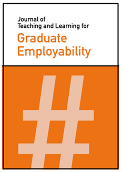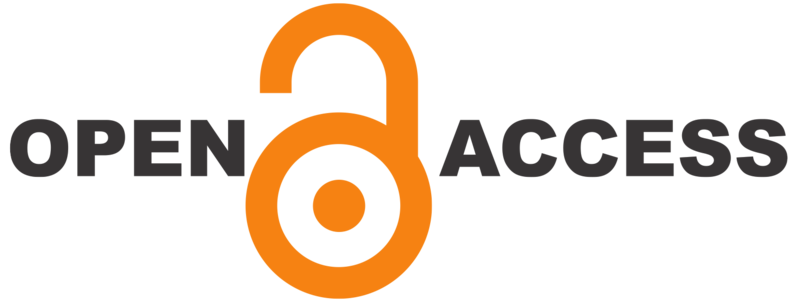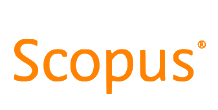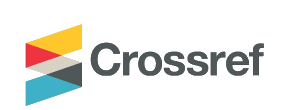Implementing employability strategy: Inspiring change through significant conversations
DOI:
https://doi.org/10.21153/jtlge2024vol15no2art2021Keywords:
Academic development; curriculum transformation; conversations; employability; work-integrated learningAbstract
Higher education plays a key role in cultivating graduate employability, which is essential to meeting multiple individual, community, social and labour market needs. Universities prioritise employability through strategic goals and initiatives designed to foster work-ready graduates equipped with the skills, aptitudes, and knowledge needed to navigate self-determined career pathways. One core approach to delivering on the employability agenda is through work-integrated learning (WIL). Despite institution’s efforts to set targets to increase access to WIL for all students, there is little evidence on how these strategies are implemented, reported, and revised, particularly in resource-depleted environments. This paper illuminates how institutional directives can be enacted when transformative learning is centralised through relational, collegial conversations. It builds on Dean et al.’s (2020) paper to unpack how the WIL Curriculum Classification (WILCC) Framework has been executed through employability champions across the institution, who advocate for meaningful, contextually appropriate change that is co-designed with colleagues. These ‘significant conversations’ are the impetus for transforming students’ learning experiences and career readiness. The paper offers four vignettes to showcase how the WILCC Framework has been implemented and disseminated across local, institutional, cross-campus and international contexts through transformative engagement in relational dialogue. It outlines key recommendations for holding significant conversations to influence change and champion the employability movement.Metrics
References
Australian Government (2008). Review of Australian Higher Education: Final Report (Bradley Review). Department of Education, Employment and Workplace Relations.
Australian Government (2020). National Priorities and Industry Linkage Fund: Final Report. Department of Education, Skills and Employment. https://www.education.gov.au/job-ready/resources/npilf-final-report
Bennett, D., Knight, E., Divan, A., Kuchel, L., Horn, J., van Reyk, D., & Burke da Silva, K. (2017). How do research-intensive universities portray employability strategies? A review of their websites. Australian Journal of Career Development, 26(2), 52-61.
Bennett, D., Richardson, S., & MacKinnon, P. (2016). Enacting strategies for graduate employability: How universities can best support students to develop generic skills. Australian Government Office for Learning and Teaching. https://melbourne-cshe.unimelb.edu.au/__data/assets/pdf_file/0005/1874777/SP13-3258-Curtin_Bennett-_Graduate-Employability_Part-B-Appendices1.pdf
Billett, S. (2010). Learning through practice: models, traditions, orientations and approaches. Springer.
Bridgstock, R., Grant-Iramu, M., & McAlpine, A. (2019). Integrating career development learning into the curriculum: Collaboration with the careers service for employability. Journal of Teaching and Learning for Graduate Employability,10(1), 56-72. https://doi.org/10.3316/informit.580534557337065
Bridgstock, R., & Jackson, D. (2019). Strategic institutional approaches to graduate employability: navigating meanings, measurements and what really matters. Journal of Higher Education Policy and Management, 41(5), 468–484. https://doi.org/10.1080/1360080X.2019.1646378
Blackmore, P., Bulaitis, Z. H., Jackman, A. H., & Tan, E. (2016). Employability in higher education: A review of practice and strategies around the world. Report commissioned by Pearson Efficacy and Research. https://uk.pearson.com/content/dam/region-core/uk/pearson-uk/documents/about/news-and-policy/employability-models-synthesis.pdf
Boud, D. & Brew, A. (2013). Reconceptualising academic work as professional practice: implications for academic development, International Journal for Academic Development, 18(3), 208-221. https://doi.org/10.1080/1360144X.2012.671771
Cheng, M., Adekola, O., Albia, J. and Cai, S. (2022), Employability in higher education: a review of key stakeholders' perspectives, Higher Education Evaluation and Development, 16(1), 16-31. https://doi.org/10.1108/HEED-03-2021-0025
Dean, B.A., Eady, M.J., Yanamandram, V., O’Donnell, N., Moroney, T., & Glover-Chambers, T. (2021). Leadership that supports an institutional approach to work-integrated learning. In Ferns, S., Rowe, A.D., & Zegwaard, K. (Eds.), Advances in research, theory and practice in work-integrated learning (pp. 203-214). Routledge.
Dean, B. A, Yanamandram, V., Eady, M. J., Moroney, T., O'Donnell, N., & Glover-Chambers, T. (2020). An institutional framework for scaffolding work-integrated learning across a degree. Journal of University Teaching & Learning Practice, 17(4), 1-16. https://ro.uow.edu.au/jutlp/vol17/iss4/6
Dean, B.A., & Rook, L. (2023). Toward sustainability: a typology for non-placement work-based learning, Higher Education, Skills and Work-Based Learning, 13(5), 942-954. https://doi.org/10.1108/HESWBL-02-2023-0030
Dean, B. A., Ryan, S., Glover-Chambers, T., West, C., Eady, M. J., Yanamandram, V., Moroney, T., & O’Donnell, N. (2022). Career development learning in the curriculum: what is an academic’s role? Journal of Teaching and Learning for Graduate Employability, 13(1), 142–154. https://doi.org/10.21153/jtlge2022vol13no1art1539
Dean, B. A., & Sykes, C. (2022). A practice-based approach to understanding learning on placement: Identifying handholds and knowing how to go on. Studies in Continuing Education, 44(3), 510-525. https://doi.org/10.1080/0158037X.2021.1911984
Dorner, H., & Belic, J. (2021). From an individual to an institution: observations about the evolutionary nature of conversations, International Journal for Academic Development, 26(3), 210-223, https://doi.org/10.1080/1360144X.2021.1947295
Eames, C., & Coll, R. K. (2010). Cooperative education: integrating classroom and workplace learning. In S. Billett (Ed.), Learning through practice: models, traditions, orientations and approaches (pp. 180-196). Springer.
Fakunle, O., & Higson, H. (2021). Interrogating theoretical and empirical approaches to employability in different global regions. Higher Education Quarterly, 75(4), 525-534. https://doi.org/10.1111/hequ.12345
Farenga, S. A., & Quinlan, K. M. (2016). Classifying university employability strategies: three case studies and implications for practice and research. Journal of Education and Work, 29(7), 767-787. https://doi.org/10.1080/13639080.2015.1064517
Fraser, M., Wotring, A., Green, C. A., & Eady, M. J. (2024). Designing a framework to improve critical reflection writing in teacher education using action research. Educational Action Research, 32(1), 43-59.
Gherardi S., Nicolini D., & Odella F. (1998). Toward a social understanding of how people learn in organizations: the notion of situated curriculum. Management Learning, 29(3), 273- 298. https://doi.org/10.1177/1350507698293002
Gherardi, S. (2018). Practices and Knowledges, Teoria e Prática em Administração, 8(2), 33-59. http://dx.doi.org/10.21714/2238-104X2018v8i2S-38857
Glover-Chambers, T., Dean, B. A., Eady, M. J., West, C., Ryan, S., & Yanamandram, V. (2024). Academics’ practices and perceptions of career development learning in the curriculum. Higher Education Research & Development, 1–16. https://doi.org/10.1080/07294360.2024.2347621
Jackson, D., & Bridgstock, R. (2021). What actually works to enhance graduate employability? The relative value of curricular, co-curricular, and extra-curricular learning and paid work. Higher Education, 81(4), 723-739. https://doi.org/10.1007/s10734-020-00570-x
Jackson, D., & Dean, B. A. (2022). The contribution of different types of work-integrated learning to graduate employability, Higher Education Research & Development, 42(1), 93-110. https://doi.org/10.1080/07294360.2022.2048638
Jackson, D., & Dean, B. A. (2023). Employability-related activities beyond the curriculum: how participation and impact vary across diverse student cohorts. Higher Education, 86(5), 1151-1172. https://doi.org/10.1007/s10734-022-00966-x
Jackson, D. & Wilton, N. (2016). Developing career management competencies among undergraduates and the role of work-integrated learning, Teaching in Higher Education, 21(3), 266-286, DOI: 10.1080/13562517.2015.1136281
Jackson, D. (2017). Developing pre-professional identity in undergraduates through work-integrated learning. Higher Education, 74, 833-853. https://doi.org/10.1007/s10734-016-0080-2
Kaider, F., Hains-Wesson, R., & Young, K. (2017). Typology of authentic WIL activities and assessment, Asia-Pacific Journal of Cooperative Education, 18(2), 153-165.
Lave, J., & Wenger, E. (1991). Situated Learning: Legitimate Peripheral Participation. Cambridge University Press.
McIlveen, P., Brooks, S., Lichtenberg, A., Smith, M., Torjul, P., & Tyler, J. (2008). Career development learning & work-integrated learning in Australian higher education: A discussion paper. National Symposium on Career Development Learning, Melbourne, Australia, 19 June 2008.
McQuaid, R.W., & Lindsay, C.D. (2005). The concept of employability. Urban Studies. 42(2), 197-219. https://doi.org/10.1080/0042098042000316100
O’Kane, M., Behrendt, L., Glover, B., Macklin, J., Nash, F., Rimmer, B. & Wikramanayake, S. (2024) Australian Universities Accord Final Report. Australian Government. https://www.education.gov.au/australian-universities-accord
Okolie, U. C., Igwe, P. A., Nwosu, H. E., Eneje, B. C., & Mlanga, S. (2020). Enhancing graduate employability: Why do higher education institutions have problems with teaching generic skills? Policy Futures in Education, 18(2), 294–313. https://doi.org/10.1177/1478210319864824
Oliver, B. (2015). Redefining graduate employability and work-integrated learning: proposals for effective higher education in disrupted economies. Journal of Teaching and Learning for Graduate Employability, 6(1), 56–65. https://doi.org/10.21153/jtlge2015vol6no1art573
Orlikowski, W.J. (2007). Sociomaterial Practices: exploring technology at work. Organization Studies, 28(9), 1435- 1448. http://dx.doi.org/10.1177/0170840607081138
Patrick, C. J., Peach, D., Pocknee, C., Webb, F., Fletcher, M., & Pretto, G. (2009). The WIL (Work Integrated Learning) report: A national scoping study. Queensland University of Technology.
Pham, T., Saito, E., Bao, D., & Chowdhury, R. (2018). Employability of international students: Strategies to enhance their experience on work-integrated learning (WIL) programs. Journal of Teaching and Learning for Graduate Employability, 9(1), 62-83. https://doi.org/10.21153/jtlge2018vol9no1art693
Pleschová, G., Roxå, T., Thomson, K.E. & Felten (2021). Conversations that make meaningful change in teaching, teachers, and academic development. International Journal for Academic Development 26(3), 201-209. https://doi.org/10.1080/1360144X.2021.1958446
Roxå, T., & Mårtensson, K. (2009). Significant conversations and significant networks–exploring the backstage of the teaching arena. Studies in Higher Education, 34(5), 547–559. https://doi.org/10.1080/03075070802597200
Schatzki, T. (2017). Practices and learning. In P. Grootenboer, C. Edwards-Groves & S. Choy (Eds.) Practice Theory Perspectives on Pedagogy and Education. (pp. 23–43). Springer. https://doi.org/10.1007/978-981-10-3130-4_2
Spitzner, D.J., & Meixner, C. (2021). Significant conversations, significant others: intimate dialogues about teaching statistics, International Journal for Academic Development, 26(3), 292-306. https://doi.org/10.1080/1360144X.2021.1954931
Thomson, K.E., & Barrie, S. (2021). Conversations as a source of professional learning: exploring the dynamics of camaraderie and common ground amongst university teachers, International Journal for Academic Development, 26(3), 320-334. https://doi.org/10.1080/1360144X.2021.1944160
Tomlinson, M. (2008). The degree is not enough: Students’ perceptions of the role of higher education credentials for graduate work and employability. Quinlan British Journal of Sociology of Education, 29(1), 49–61. https://doi.org/10.1080/01425690701737457
Tomlinson, M., & Holmes, L. (2017). Graduate employability in context: theory, research and debate, Palgrave Macmillan.
Tran, L. H. N. (2017) Developing generic skills for students via extra-curricular activities in Vietnamese universities: practices and influential factors, Journal of Teaching and Learning for Graduate Employability, 8(1), 22–39. https://doi.org/10.21153/jtlge2017vol8no1art624
Universities Australia (2019). Work Integrated Learning in Universities: Final Report. Universities Australia.
Yorke, M. (2006). Employability in higher education: what it is – what it is not, The Higher Education Academy.
Zegwaard, K., Pretti, J., Rowe, A., & Ferns, S. (2023). Defining work-integrated learning. In K. Zegwaard & J. Pretti (Eds.), International Handbook for Work-Integrated learning (3 ed., pp. 29-48). Routledge.
Zegwaard, K.E., Johansson, K., Kay, J., McRae., N., Ferns, S., & Hoskin, K. (2019). Professional development needs of the international work-integrated learning community. International Journal for Work-Integrated Learning, 20(2), 201-217.
Downloads
Published
Issue
Section
License
Copyright (c) 2024 Bonnie Amelia Dean, Kate Tubridy, Michelle J Eady , Venkata Yanamandram

This work is licensed under a Creative Commons Attribution-NonCommercial 4.0 International License.












